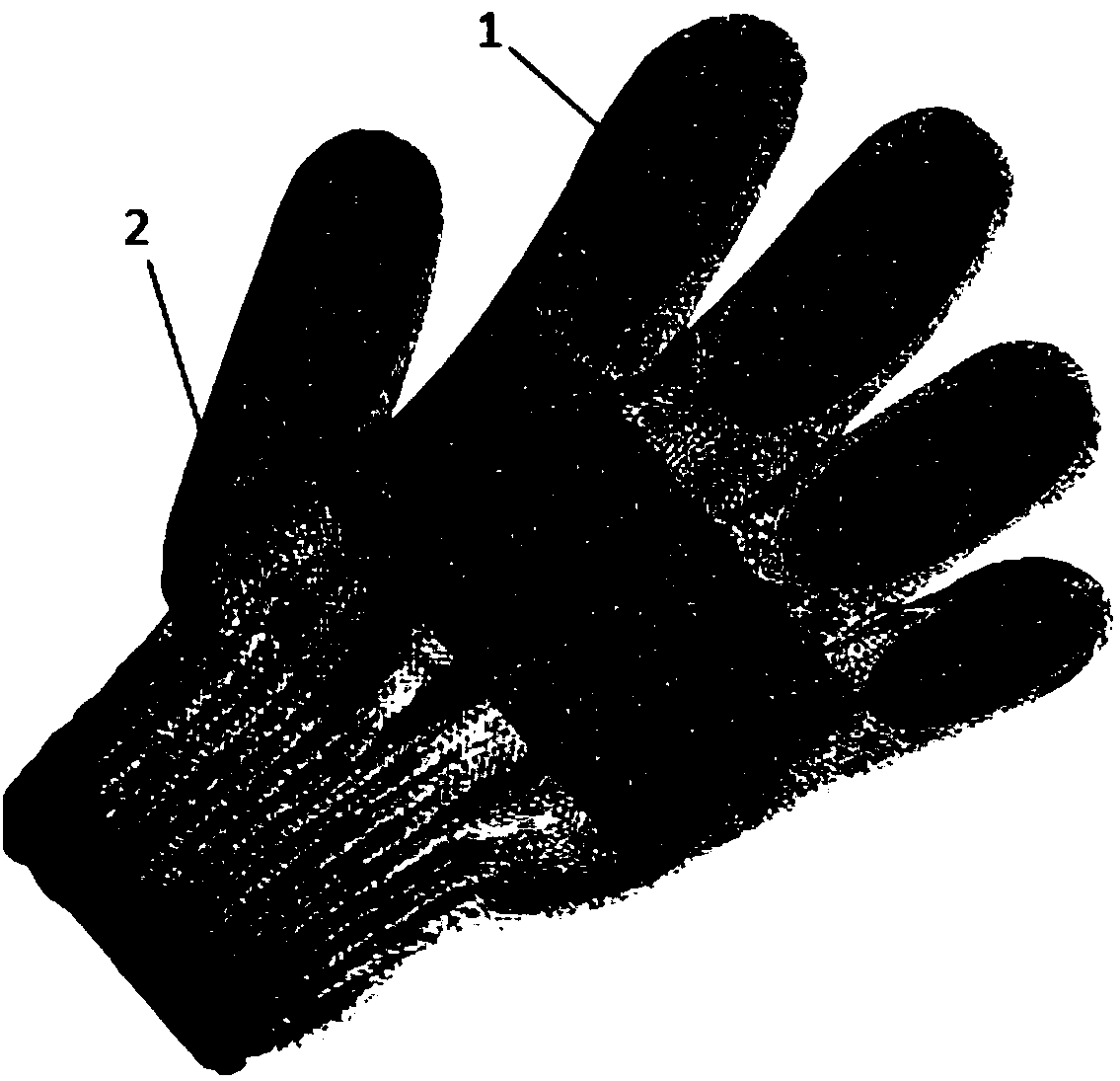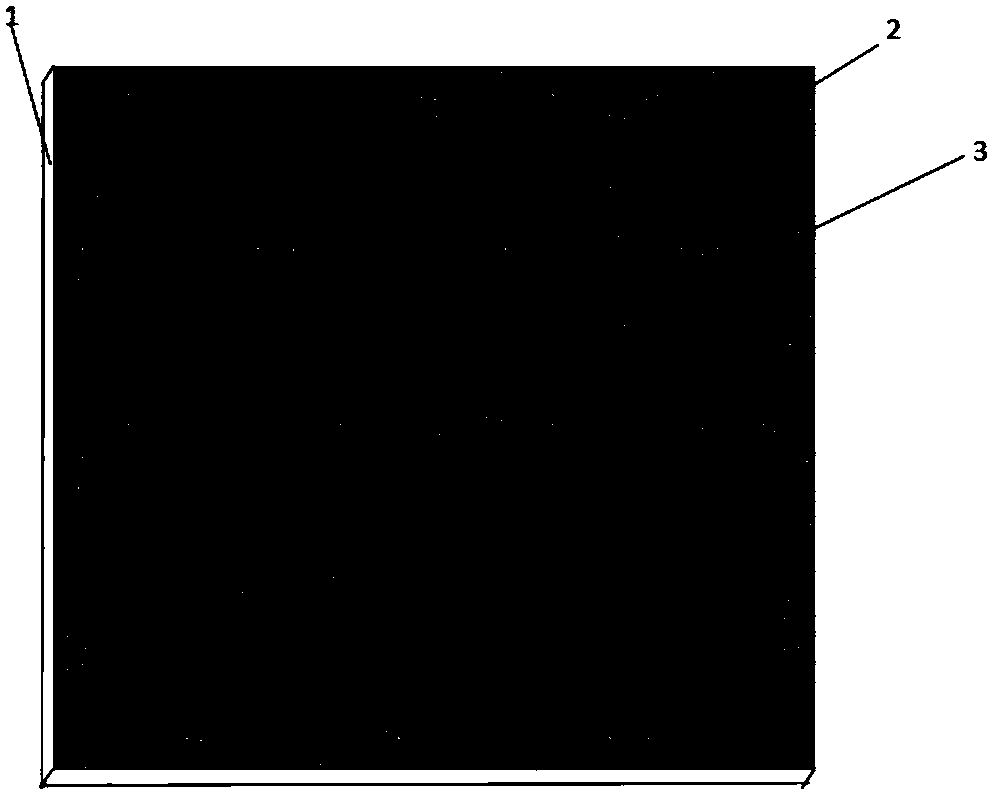Preparation method of stab-resistant cut-resistant flexible material
A flexible material, cut-resistant technology, applied in chemical instruments and methods, layered products, lamination devices, etc., can solve the problems of complex production time, high raw material cost, high cost, and achieve good puncture and cut resistance, softness High-performance, light-weight effect
- Summary
- Abstract
- Description
- Claims
- Application Information
AI Technical Summary
Problems solved by technology
Method used
Image
Examples
Embodiment 1
[0026] (1) Select ordinary polyester fabric as the base fabric, apply a layer of ordinary adhesive on the base fabric, and then use a paving machine to evenly spread silicon carbide particles with a size of 80 microns on the base fabric coated with adhesive , surface density is 250g / m 2 , and move it to a hot press for hot pressing at a temperature of 210° C. for 200 s to obtain a stab-resistant and cut-resistant fabric.
[0027] (2) Test the cut-resistant performance of the stab-resistant and cut-resistant fabric in step (1) of the first layer, reaching the cut-resistant standard ISO13997-1999 test standard A6 level, and has good flexibility and softness.
[0028] (3) The stab-resistant performance of the stab-resistant and cut-resistant fabric in the test step (1), the dynamic non-penetration thickness is 10 layers of the fabric, and it reaches the stab-resistant standard GA68-2008.
Embodiment 2
[0030] (1) Aramid gloves are selected as the base fabric, and a layer of ordinary adhesive is applied to a local position on the base fabric, and then the silicon carbide particles with a size of 100 microns and polycarbonate particles with a size of 100 microns are combined by a paving machine. The particles are evenly spread on the base cloth, and the surface density is 350g / m 2 , and move it to a hot press machine for hot pressing at a temperature of 210° C. for 200 s to obtain cut-resistant gloves.
[0031] (2) The cut-resistant performance of the above-mentioned cut-resistant gloves was tested, and it reached the A8 level of the cut-resistant standard ISO13997-1999 test standard, and had good flexibility and softness.
[0032] (3) the anti-stab performance of the base cloth uniformly coated with silicon carbide particles of 100 microns and polycarbonate particles of 100 microns in the test step (1), the dynamic non-penetration thickness is 7 layers of this fabric, Meet t...
Embodiment 3
[0034] (1) Select the aramid fabric as the base fabric, apply a layer of common adhesive on the base fabric, and then arrange the polycarbonate resin sheets with a size of 2cm×2cm on the base fabric according to the 0.5cm gap rule, and then place the Silicon carbide particles with a size of 80 microns are evenly spread in the gaps, and the surface density is 250g / m 2 , and move it to a hot press for hot pressing at a temperature of 210° C. for 250 s to obtain a stab-resistant and cut-resistant fabric.
[0035] (2) Test the cut-resistant performance of the stab-resistant and cut-resistant fabric in step (1) of the first layer, reaching the cut-resistant standard ISO13997-1999 test standard A9 level, and has good flexibility and softness.
[0036] (3) The stab-resistant performance of the stab-resistant and cut-resistant fabric in the test step (1), the dynamic non-penetration thickness is 4 layers of the fabric, which meets the stab-resistant standard GA68-2008.
PUM
| Property | Measurement | Unit |
|---|---|---|
| particle diameter | aaaaa | aaaaa |
Abstract
Description
Claims
Application Information
 Login to View More
Login to View More - R&D
- Intellectual Property
- Life Sciences
- Materials
- Tech Scout
- Unparalleled Data Quality
- Higher Quality Content
- 60% Fewer Hallucinations
Browse by: Latest US Patents, China's latest patents, Technical Efficacy Thesaurus, Application Domain, Technology Topic, Popular Technical Reports.
© 2025 PatSnap. All rights reserved.Legal|Privacy policy|Modern Slavery Act Transparency Statement|Sitemap|About US| Contact US: help@patsnap.com



